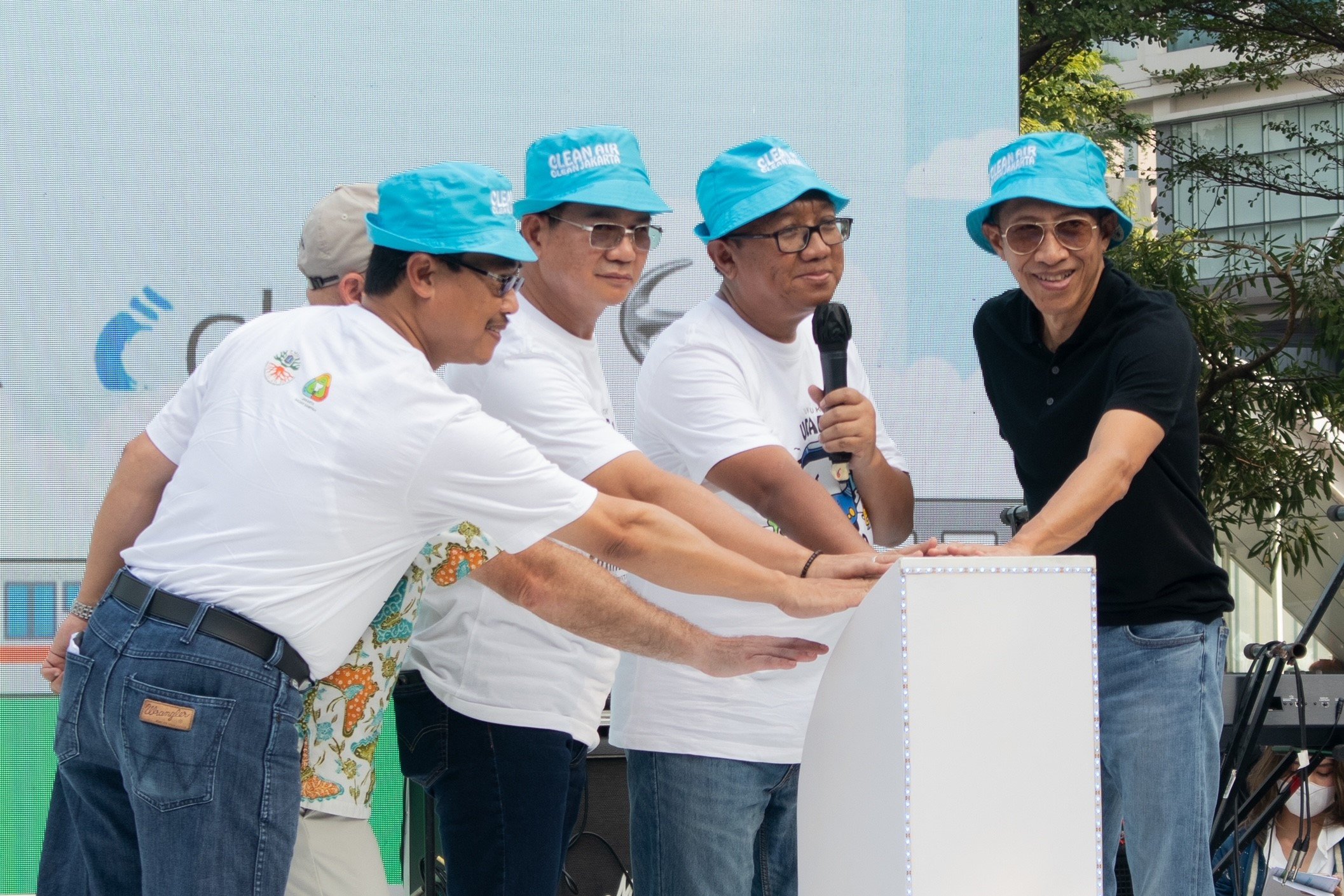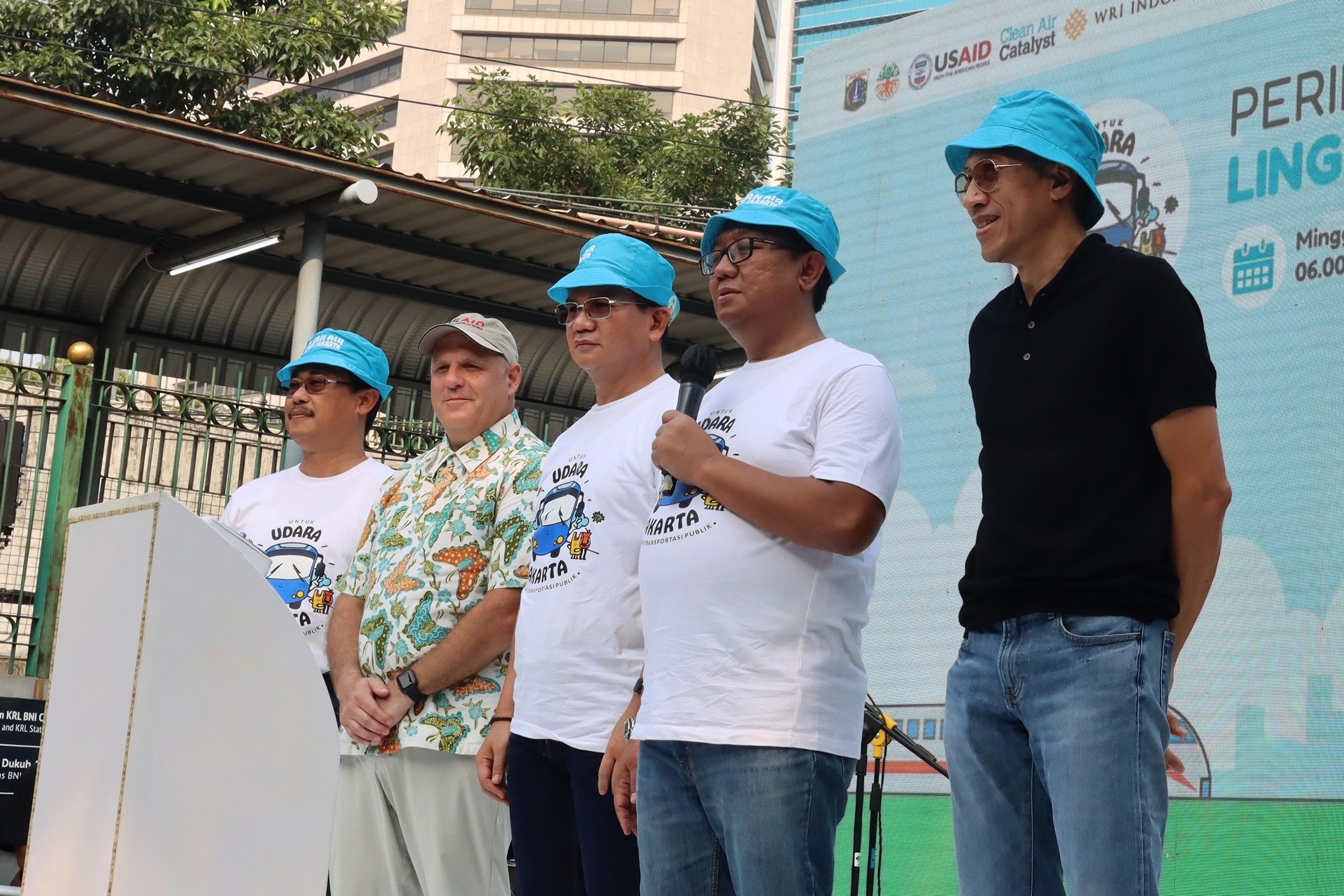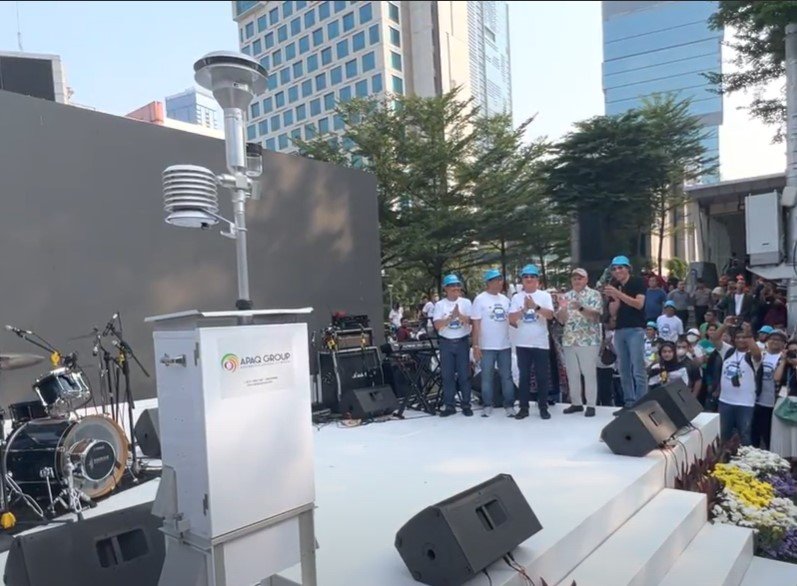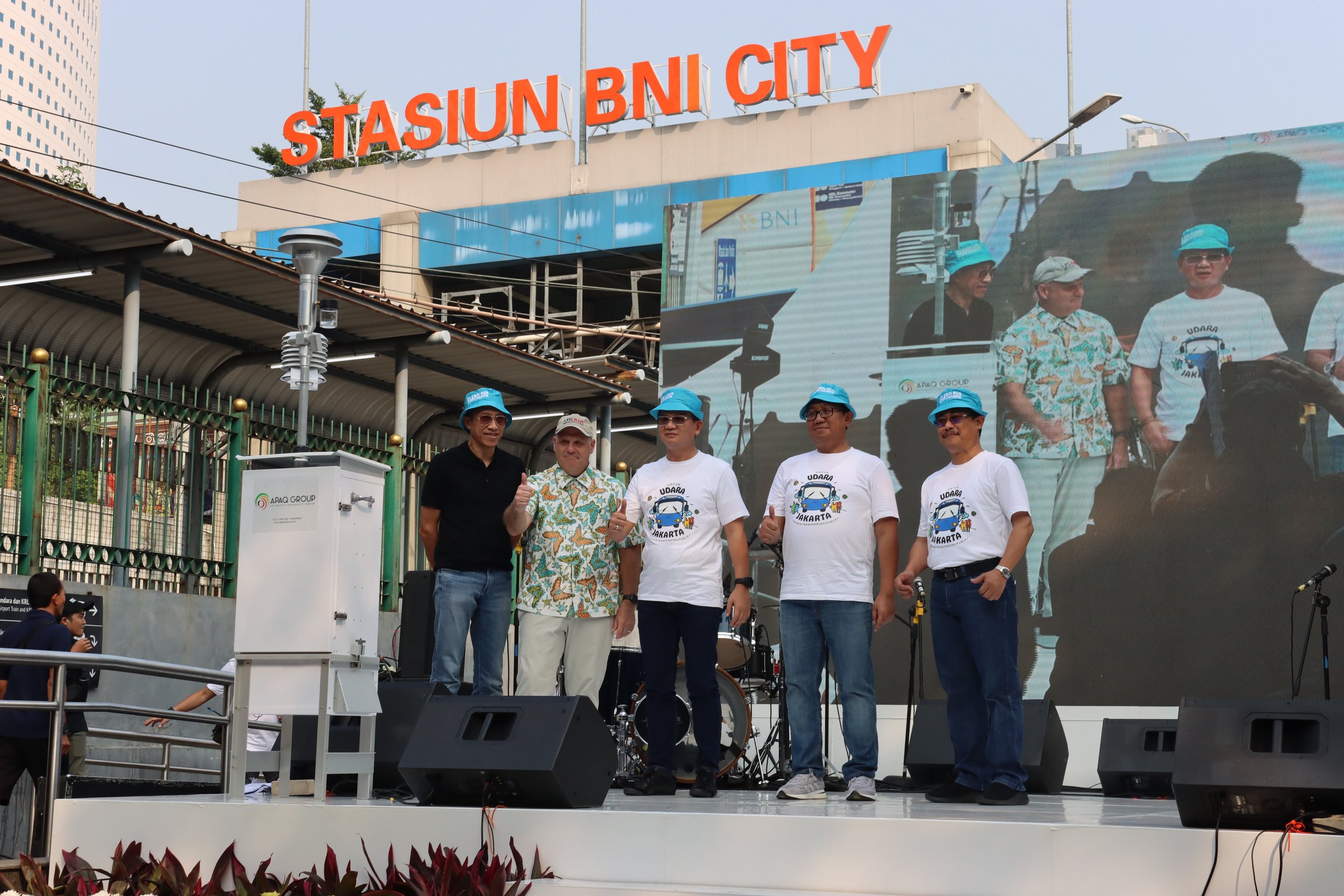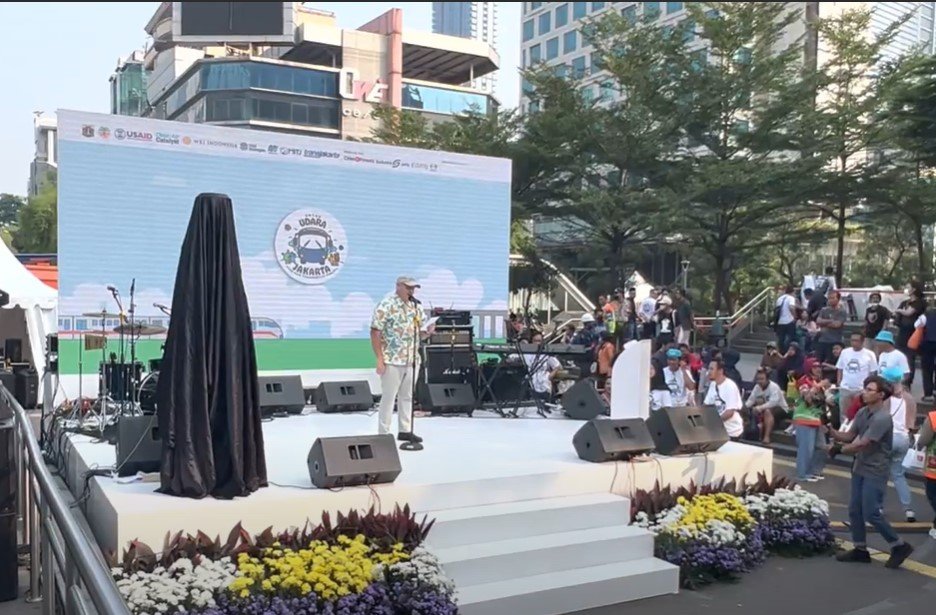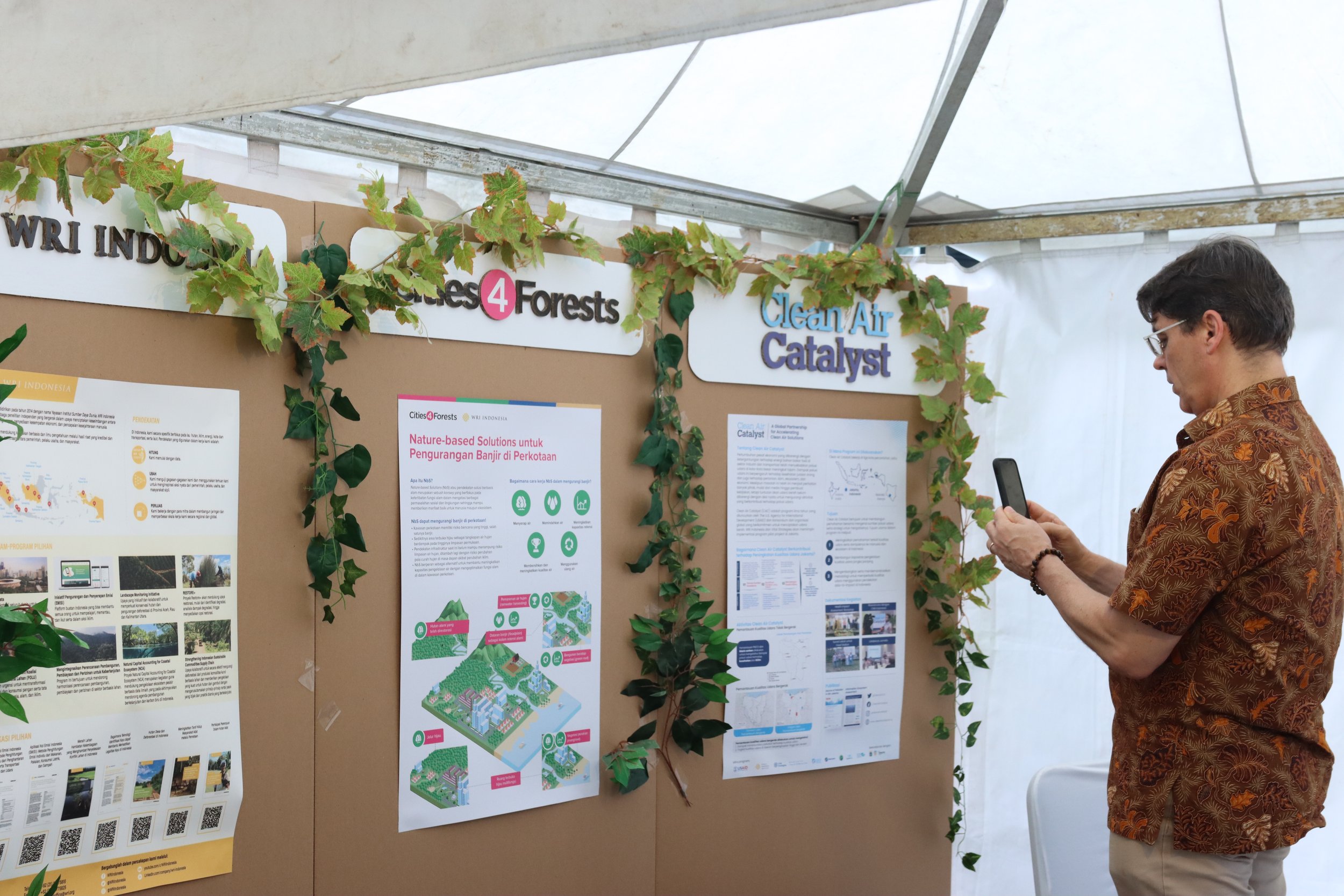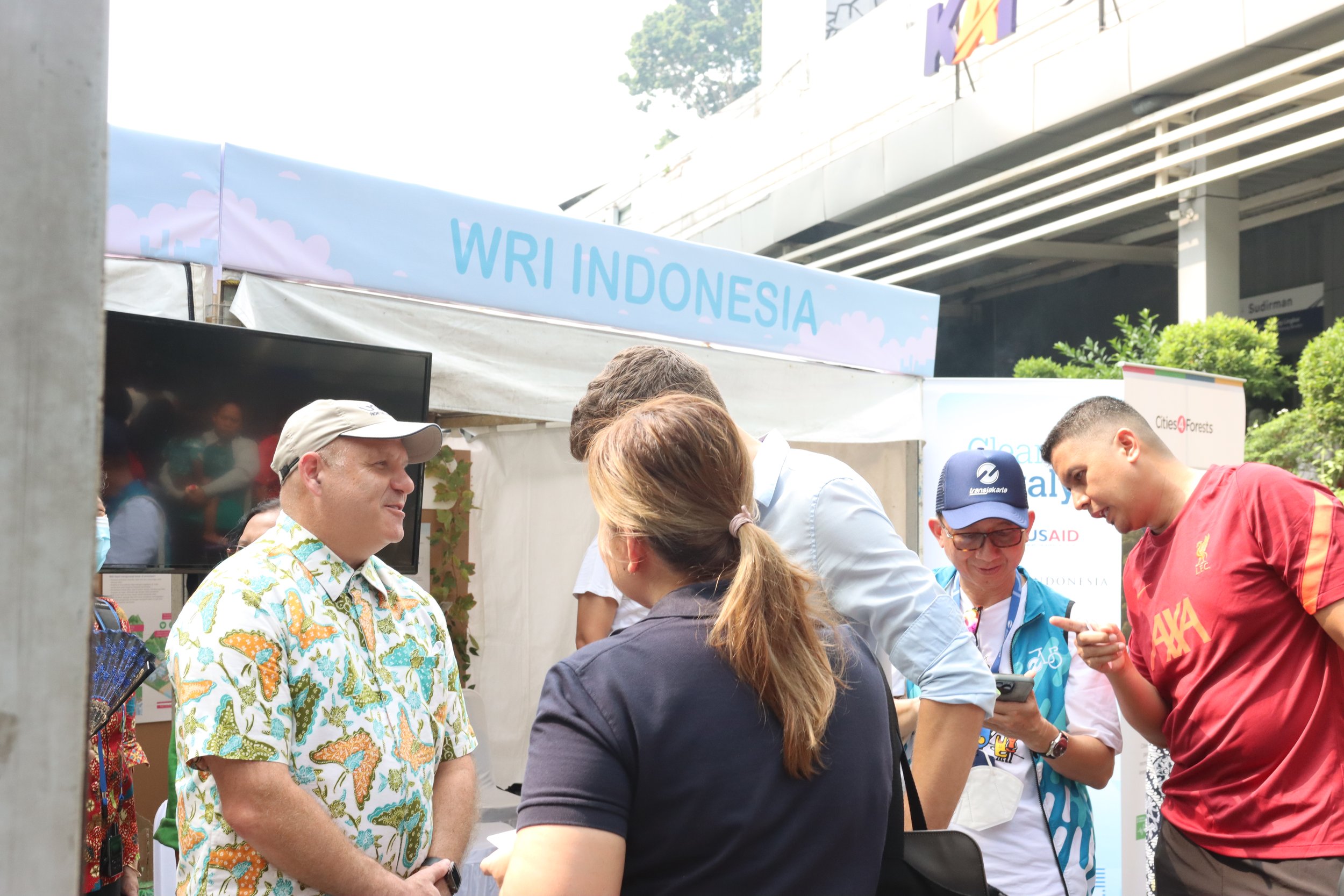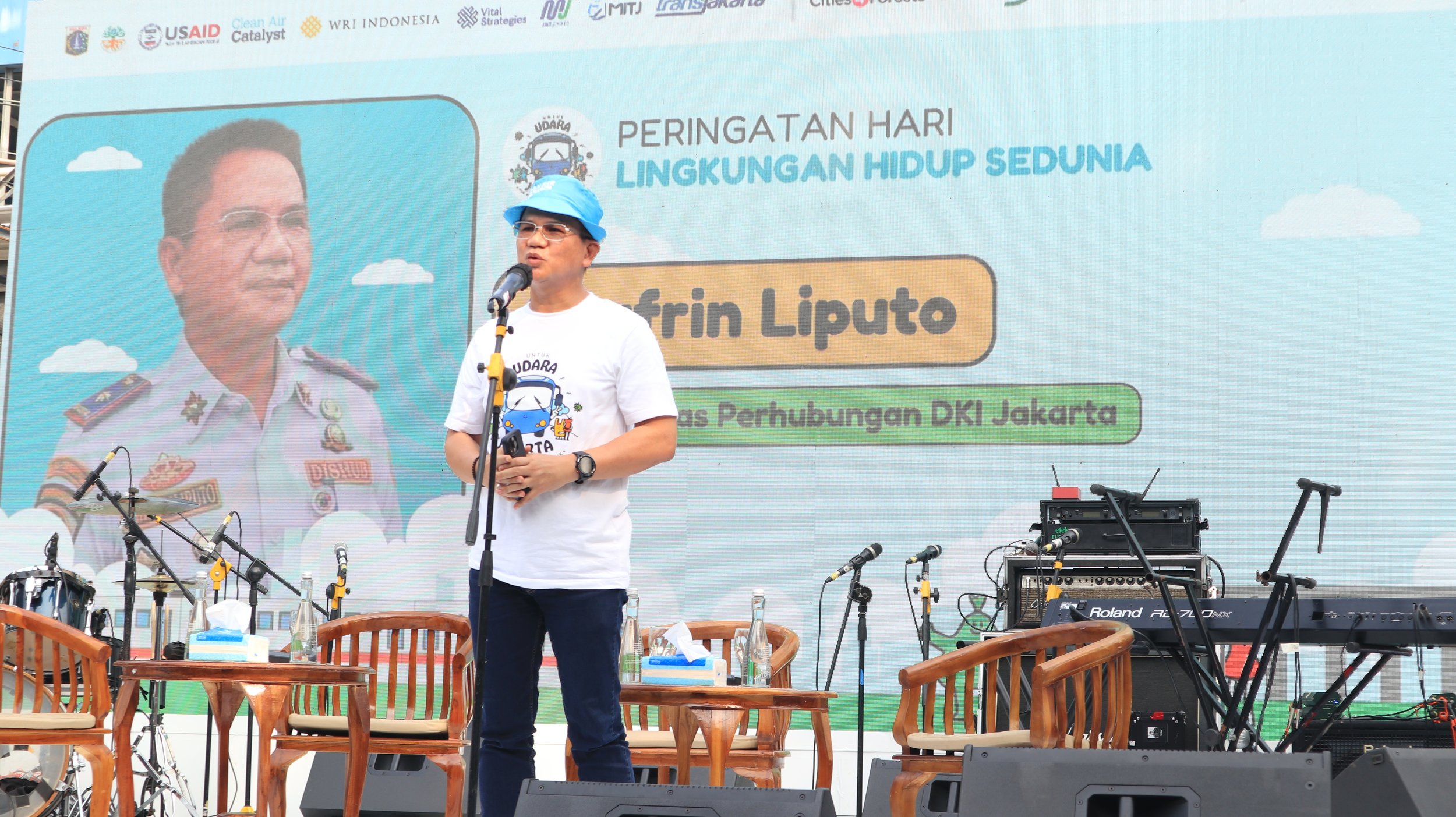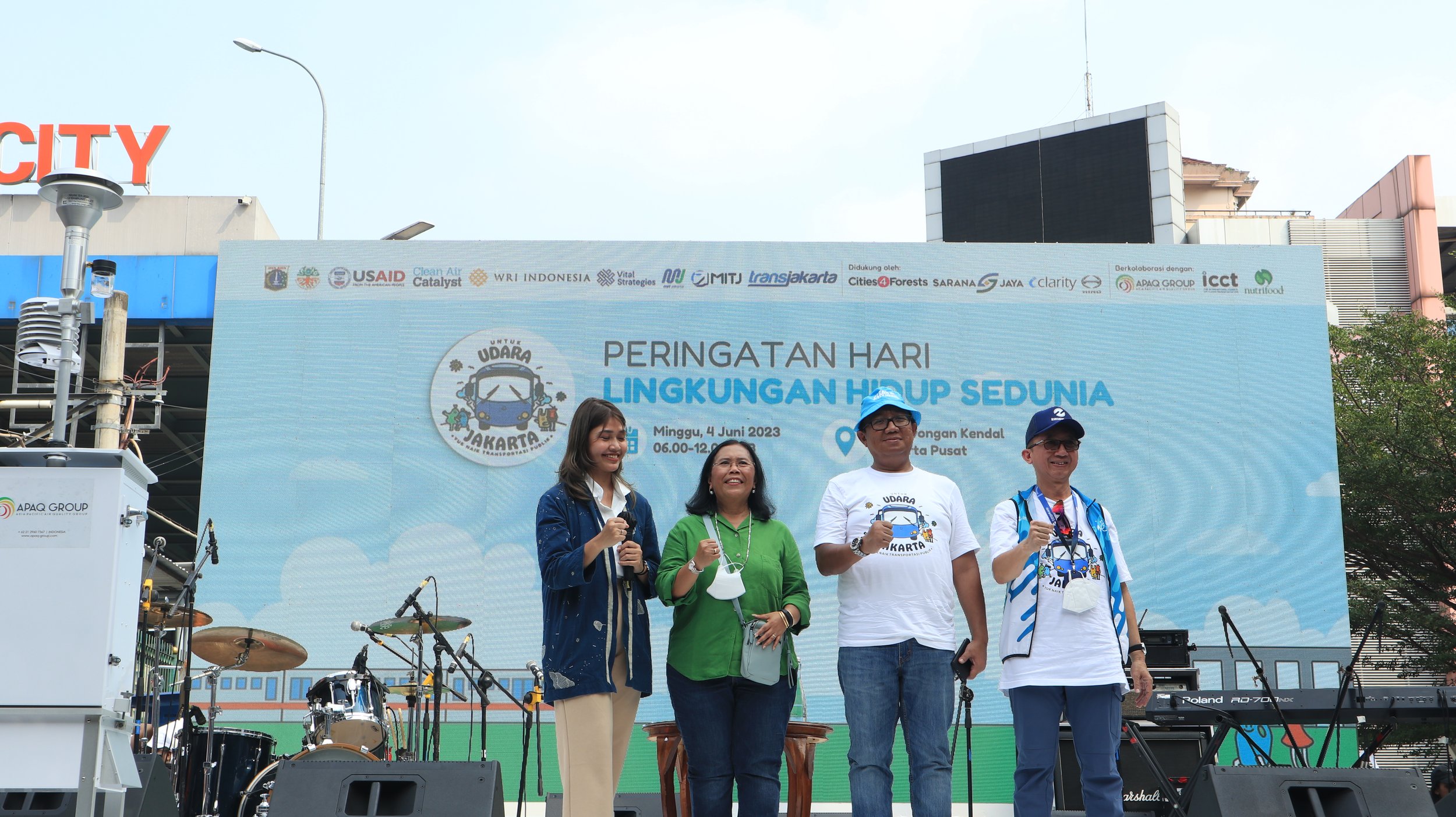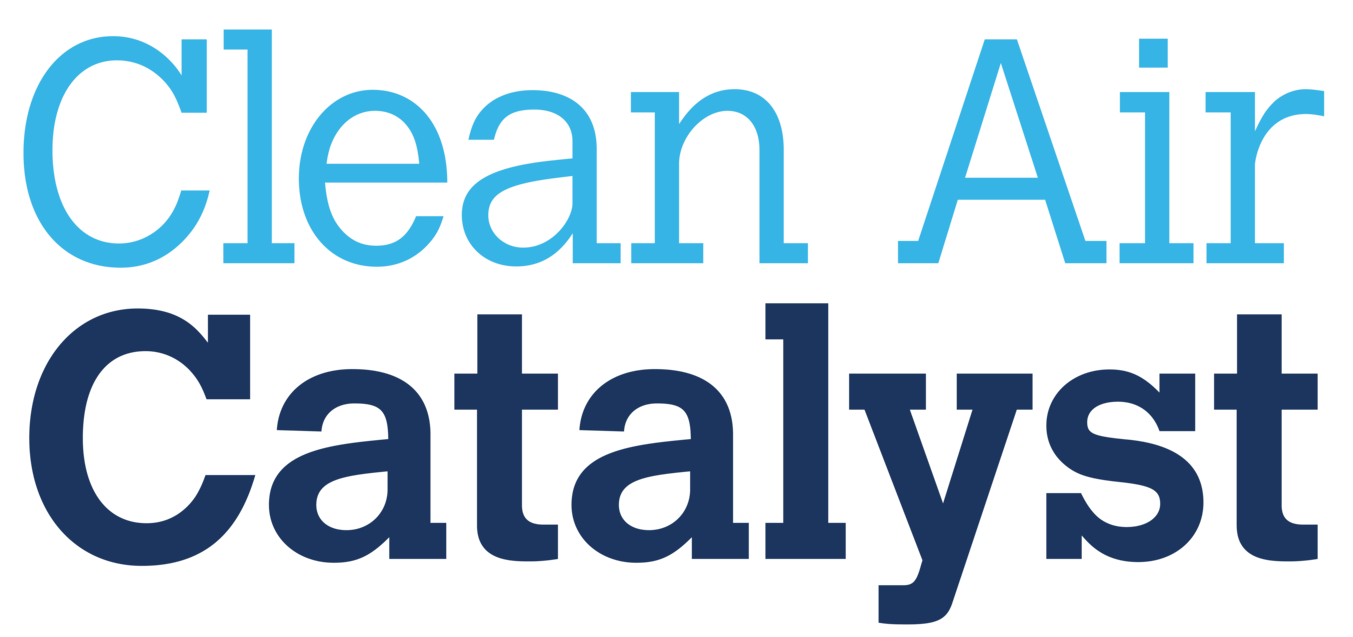Clean Air Catalyst unveils new air quality monitoring for Jakarta
State-of-the-art instruments to provide data on sources of local air pollution. To learn more about the instruments click here.
(JAKARTA – June 04, 2023) Jakarta is getting new reference-grade air quality monitoring equipment at three new sites and upgraded instruments at four existing monitoring sites in the Jakarta area. The new equipment will provide highly accurate data about local sources of air pollution and help the city to improve air quality, tackle climate change, and protect the health of the city’s residents.
The instruments are being provided through a strategic partnership between Jakarta Government with WRI Indonesia under the Clean Air Catalyst program, a global partnership supported by the US Agency for International Development and a consortium led by World Resources Institute (WRI) Indonesia and Vital Strategies in Jakarta. The equipment was unveiled during June 4, 2023 World Environment Day festivities at the Terowongan Kendal attended by representatives from the three organizations.
The air monitoring equipment is a critical tool needed to measure and address air pollution in the city,“ Asep Kuswanto, Head of the DKI Jakarta Environmental Agency said. “It will provide more accurate data on the pollutants affecting the quality of the air we breathe and will help us maintain Jakarta’s blue sky.”
"Air pollution is a major environmental and public health challenge in cities around the world," said USAID Indonesia Mission Director Jeff Cohen. "This new monitoring equipment will provide important data to help the provincial government of Jakarta in its efforts to improve air quality and the health of its citizens."
“WRI Indonesia is proud to have played a crucial role in providing the new air quality monitoring equipment for Jakarta,” WRI Indonesia Country Director Nirarta Samadhi said. “Our partnership with the Government of DKI Jakarta has enabled us to provide these valuable tools to collect data on local sources of air pollution and make informed decisions when creating clean air policies. We hope this cooperation will continue, as we work together towards improving the health and well-being of Jakarta's citizens.
The three new instruments are being installed in stages in areas that are experiencing lack of adequate air quality monitoring coverage, urban areas close to industrial complexes, and bodies of water to capture baseline data from the sea. The locations are: Mayor’s Office of West Jakarta, Mayor’s Office of East Jakarta and the seaport area which includes IPC Pelindo building in North Jakarta. The four Jakarta government sites that are receiving upgraded instruments are in residential areas throughout North, East, West, and South Jakarta.
The new equipment will measure levels of fine particulate matter, tiny particles that can be inhaled and cause serious health problems, like heart attacks, stroke and asthma. It will also measure levels of black carbon, a short-lived climate pollutant that warms the planet and harms human health, as well as carbon monoxide, another hazardous pollutant. In addition, state-of-the-art meteorological instruments are being deployed to measure weather and wind conditions which have a significant impact on the city’s air quality. The data will be made available to the public through Jakarta’s current channel JAKI, Jakarta Environment Agency (DLH DKI)’s website, and other possible public platforms, once it has been validated.
During the World Environment Day event, DKI Jakarta, MRT Jakarta, and TransJakarta also launched a new campaign: “To Reduce Jakarta Air Pollution, Let’s Ride Public Transportation” with the goal of reducing air pollution in the city while alleviating the strain private vehicles create on Jakarta’s main roads.
Clean Air Catalyst has identified the transportation sector as the largest source of emissions in Jakarta and also supports government partners and stakeholders in finding ways to accelerate solutions such as environmentally friendly transportation, low-emission vehicle zones, and reducing emissions from heavy vehicles.
-END-
